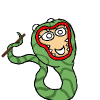I'm writing a RPG game, which will be actually the horror RPG. I've done the animation for player and all that based stuff, but now I wanted to do buttons on the left corner of the screen:

For example if I press by mouse "QUESTS", this appears on the center of the screen:

And then it's waiting for me to press for example ESCAPE to turn the picture off.
If I click options, I would like to have for example such buttons on screen like: CONTROLS, BACKGROUND MUSIC, FULLSCREEN or BACK:

And if I click CONTROLS, the last picture disappears and this one is on the screen:

Then it's waiting for me to press ESCAPE or another button on screen, for example BACK.
Here's the part of code:
[source lang="cpp"]if(event.type == SDL_MOUSEMOTION )
{
mouseX = event.motion.x;
mouseY = event.motion.y;
}
if(event.type == SDL_MOUSEBUTTONDOWN )
{
//Buttons
if(event.button.button == SDL_BUTTON_LEFT
&&
( mouseX >= buttonquestslocation.x &&
mouseX <= buttonquestslocation.x + buttonquestslocation.w ) &&
( mouseY >= buttonquestslocation.y &&
mouseY <= buttonquestslocation.y + buttonquestslocation.h ) )
{
Mix_PlayChannel(-1, paper, 0);
SDL_BlitSurface(levelonemap, NULL, screen, &paperlocation);
SDL_Flip(screen);
//Here's the place where I want the screen to wait until the player will press the button. I didn't know how to do that so i put a Delay.
SDL_Delay(3000);
}
if(event.button.button == SDL_BUTTON_LEFT
&&
( mouseX >= buttonoptionslocation.x &&
mouseX <= buttonoptionslocation.x + buttonoptionslocation.w ) &&
( mouseY >= buttonoptionslocation.y &&
mouseY <= buttonoptionslocation.y + buttonoptionslocation.h ) )
{
SDL_BlitSurface(options, NULL, screen, &optionslocation);
SDL_BlitSurface(buttoncontrols, NULL, screen, &buttoncontrolslocation);
SDL_Flip(screen);
Mix_PlayChannel(-1, paper, 0);
//Now player must choose between: CONTROLS, BACKGROUND MUSIC, FULLSCREEN or BACK
}
if(event.button.button == SDL_BUTTON_LEFT
&&
( mouseX >= buttonexitlocation.x &&
mouseX <= buttonexitlocation.x + buttonexitlocation.w ) &&
( mouseY >= buttonexitlocation.y &&
mouseY <= buttonexitlocation.y + buttonexitlocation.h ) )
{
SDL_Quit();
return 0;
}
}[/source]





